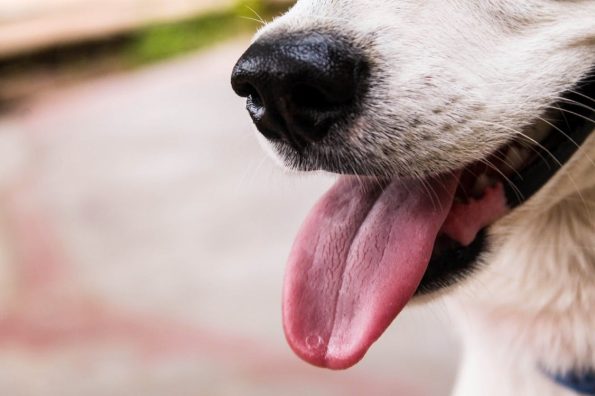
When the warmer weather is on its way, please be alert to the potential danger to your pets of heatstroke (also known as heat stress).
Heatstroke is a common issue and vets see a number of patients needing their help as the weather warms up. Heatstroke can rapidly cause serious disease (multiple organ failure) and even death if not rapidly treated.
It’s a good idea to make sure that you know how to avoid heatstroke in your pets and are familiar with the signs, just in case.
WHY DO PETS GET HEAT STROKE AND WHAT IS IT?
Following exposure to high temperatures bodies can overheat. Untreated, heatstroke can quickly damage the major organs (especially brain, heart, kidneys and muscles). The longer treatment is delayed the more there is a risk of serious complications and death.
Pets are very susceptible to heat stroke. Whilst people have sweat glands all over their body to help cool down in the heat, pets such as dogs and cats have a limited ability to sweat. Rather than sweating to cool themselves down dogs eliminate heat by panting. The tongue effectively acts as a radiator to cool the blood as cool air is moved across it by the panting. Cats lick their coats to cool down. When saliva evaporates from the fur it provides a cooling effect.
If the air around them is too hot, pets are physically unable to regulate their body temperature. Any hot environment can cause heat stress for pets.
ARE SOME PETS MORE AT RISK?
All pets can be affected by heat stroke. However some factors make certain pets especially susceptible to heat stress, including:
– Age (older or very young pets are more at risk)
– Obesity
– Long or thick coat
– Playful/energetic dogs. Some play obsessed dogs won’t stop playing even when they are overheating
– Brachycephalic breed of dogs and cats (short nosed or flat faced breeds) such as Pugs, Staffordshire Terriers and Bulldogs or cats such as Persians and Himalayans.
– Some medical conditions such as:
* Heart or respiratory disease (e.g. laryngeal paralysis, collapsing trachea or heart failure)
* Dehydration (e.g. pets with vomiting or diarrhoea or kidney disease)
* Incapacity (e.g. some pets are less able to seek shelter due to neurological disease, poor vision or limited mobility)
– Smaller pets such as Rabbits, Guinea Pigs, Rats, Mice and birds. Because these animals are often confined to cages preventing them from moving to cooler areas, please always ensure they are located in cool, well ventilated area with plenty of cool drinking water.
WHAT ARE THE SIGNS OF HEAT STRESS
The signs of heat stress may vary between animals but can include:
– Excessive/rapid panting
– Restlessness, agitation
– Weakness (unwilling to move around, collapsing or staggering)
– Confusion, dizziness or drowsiness
– Drooling or thick, sticky saliva
– Bright red tongue or gums
– Diarrhoea/Vomiting
– Glassy eyes/fearful expression
– Muscle tremors
– Seizures or unconsciousness
– Little or no urine production
WANT TO DO IF YOU SUSPECT YOUR PET IS SUFFERING FROM HEAT STRESS
- Move your pet to a cool area
- Wet your pet with cool water (taking care not to get water into the mouth or nose especially if your pet appears weak or drowsy). You can use:
– a garden hose (make sure you run out any hot water in the hose first)
– a bathtub or sink
– a shower
or place a towel over your pet and run cool water over both the towel and your pet
- Call you nearest veterinarian or emergency clinic. Let them know that you are on your way and follow their advice.
- Offer cool water to your pet to drink
VETERINARY CARE
Your veterinarian will work to rapidly reduce your pet’s temperature and assess and monitor your pet for other secondary problems (such as possible impact on kidneys, neurological function or blood clotting). Often heat stressed pets will receive urgent intravenous fluids to help cool them and to help replace lost fluids and electrolytes. Your pet may need ongoing monitoring and care.
PREVENTING HEAT STRESS
Always take precautions to prevent your pet from being exposed to hot condition
- On warm days always provide:
– PLENTY of water (ideally multiple water bowls in reliable containers and leave the water in the shade)
– SHADE from the heat (or bring indoors if cooler)
– a well ventilated environment
- Restrict exercise
– On warm days walk early in the morning or late in the evening (or not at all if too hot)
– Be aware some very playful dogs will not stop even if overheating
- Provide other cooling aids such as
– spraying with cool water
– switching on a fan or air-conditioned
– placing ice cubes inside water containers
PETS IN CARS
Even on relatively cool days our pets can overheat inside cars. The temperature inside a sealed car on a 20C day can double in less than 10 minutes, and rise to as much as 60C within 30 minutes. On hot days this temperature increase is far more rapid.
A pet can die of heat related causes in as little as ten minutes which makes it unsafe to leave your dog in the car to just duck into the shops.
Cracking open the window of the car does very little to reduce this temperature increase and parking in the shade is not enough to keep your pet cool.
If you go somewhere that you have to leave you dog in the car, then you should leave your dog at home.
Whilst travelling with your pets, place them inside a well ventilated cage or crate or use a pet seat belt. Pets can more easily overheat in a confined (poorly ventilated) cage. Make sure that you schedule regular breaks in the trip to offer cool fresh water.
Heat stroke is a common and potentially dangerous condition. By being aware of the risks and taking some simple measures to help protect your pets you can help to keep your pet safe. We hope that these tips will help both you and your pet enjoy a more relaxing and safe summer.


